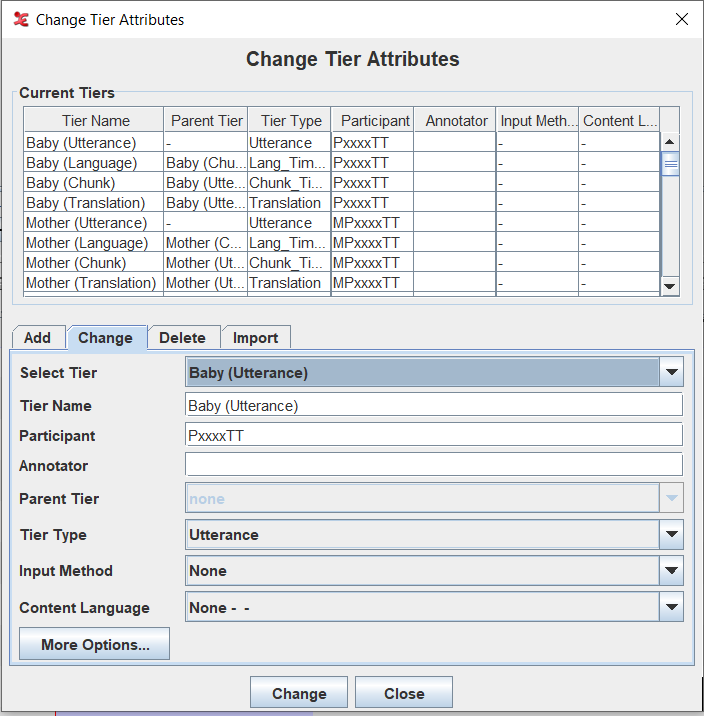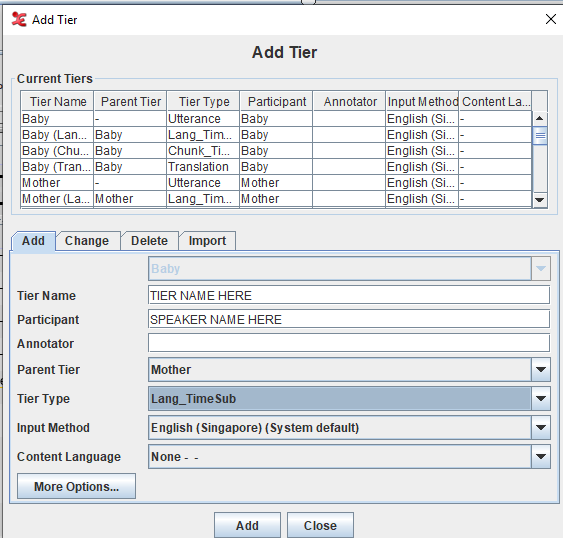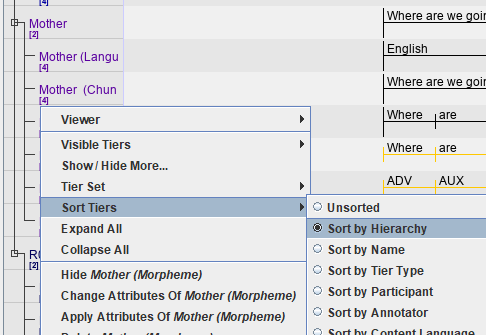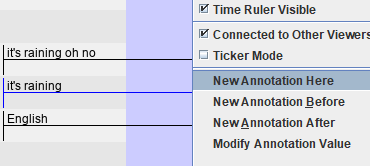6 Transcribing dependent tiers (i.e., tiers with hierarchy)
Prior to transcribing data that requires hierarchical parent-child tiers, you have to set up the stereotypes (see the dependent tiers page for summary of all type stereotypes), followed by the tiers and their hierarchy. In other words, you have to set up the tier types before you can create the tiers.
This video here from our Youtube playlist will cover how to set up and transcribe on dependent tiers.
Contents
6.1 Setting up tier types
To set up the types, go to “Type” > “Add New Tier Type” in the menu bar.
-
Input the name of the type in the “Type Name” section
-
Select the appropriate stereotype from the dropdown menu
-
(Optional) Select the controlled vocabulary that will be used on the tier or leave it as None
-
Click “Add” to add the tier type.
You can also edit, delete, or import tier types by selecting the different tabs.

Back to table of contents
6.2 Setting up tiers and their hierarchy
To add a new tier, go to “Tier” > “Add New Tier” in the menu bar.
-
Input the name of the tier in the “Tier Name” field.
-
Input the name of the speaker in the “Participant” field.
-
a. If it is a parent tier, leave the “Parent Tier” field as “none”. (Note: primary/parent tiers should be generated before secondary tiers)
b. If it is a secondary tier, select the appropriate primary/parent tier from the dropdown menu.
-
Once all the information has been inputted, click “add”.
You can also edit, delete, or import tiers by selecting the different tabs.

After you have generated all the tiers, they may be unsorted in annotation mode. Right click the tiers > Sort Tiers > Sort by Hierarchy, to view the hierarchical relations between the tiers.

Back to table of contents
6.3 Annotating dependent tiers
The process of annotating tiers follows the same procedure as described in the previous transcribing section. However, segmentation mode can only segment the parent tier, as well as tiers that have the “Included In” tier type stereotype. Once you have segmented the data, you can add the transcriptions by switching to Transcription mode.
In annotation mode, select a part of the waveform, right click > “New Annotation Here” on the primary (parent) tier. You cannot annotate on the secondary tier until a cell has been made on the primary tier. More annotations can be made on the secondary (child) tiers by selecting the secondary tier that is being annotated until the cell is highlighted blue > selecting the portion to be annotated > right click > “New Annotation Here”. DO NOT select “New Annotation Before” or “New Annotation After” as this will cause issues during the processing of the transcription file. For guidance on how to sub-divide cells on a secondary tier, watch our video guide here.

Back to table of contents